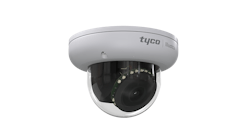Going Beyond Security: Leveraging Video Surveillance to Improve Operational Efficiency and the Passenger Experience
Airports are like cities, but many will argue that they are operationally more efficient. At any given time, there might be tens of thousands of people inside an airport. There are shops and businesses catering to a wide range of clientele, as well as restaurants and eateries for travelers and employees. Much activity is taking place simultaneously, including terminal and ramp operations from aircraft fueling, catering, cleaning, and waste management services. Furthermore, vehicle management—including parking, curb management, and other traffic management—is taking place. Securing an airport means monitoring thousands of acres of land, both inside and outside of terminals, including intrusion detection systems, access control, monitoring suspicious activity, abandoned luggage, and other signs of trouble.
As a result, surveillance devices are ever-present at today’s airports, and video surveillance coverage continues to grow in the airport environment. People (passengers and employees) and objects (including vehicles, luggage, and other mobile support equipment) are almost certainly being observed through the watchful lens of a camera. Once, airports would have been reliant on security teams to manually monitor those feeds—but today, advanced video analytics can automatically detect and alert on suspicious behaviors, improving both the accuracy and effectiveness of devices. As airports are looking more to innovative solutions, existing video surveillance systems are being leveraged and upgraded as tools to improve the passenger experience and operational efficiency of the airport environment.
Modern Analytics Improve Accuracy and Effectiveness
First, it’s important to understand the ways in which modern video surveillance has changed the way airports approach security. In the past, analog cameras were primarily useful for reviewing footage of a security incident after it had already occurred. True, live camera feeds could be sent to a bank of wall monitors for security personnel to observe, but no human being is capable of monitoring dozens—or hundreds—of feeds in real time. As a result, cameras were primarily useful for gathering evidence.
Today, nothing could be further from the truth. Improvements in artificial intelligence (AI) and deep learning capabilities have led to the development of video analytics capable of automatically detecting unattended bags, trespassers in restricted areas, aggressive or violent behavior, or even a person who has slipped and may be in need of help. Modern devices can issue alerts to security personnel in real time, reducing response times and allowing them to address potentially dangerous situations before they can escalate. They can help find the owner of a misplaced bag, or dispatch medical assistance to a traveler in distress. In short—they make the airport safer and more secure across the board.
Maximizing the Value of Security Technology to Streamline Operations
Today’s advanced analytics aren’t just being used to bolster security—the data gathered by surveillance devices is being used to improve operations in a wide variety of ways. It is helping to inform staffing
decisions, improve traffic flow, manage queues, and provide airport businesses with valuable insights. But perhaps the most impressive way surveillance technology is being leveraged today is in surface management. Planes and ground support equipment engage in a delicate, never-ending dance, and many airlines are beginning to look at the ways in which AI and deep learning can help improve the process.
Analytics are being used to gather information on ground support equipment like tugs, belt loaders, traction motors, lavatory trucks, fuel trucks, and others as they engage and disengage with planes. Where are they positioned? How long does it take to complete their tasks? Where do bottlenecks exist? These are important questions to be able to answer. As more data is gathered, an airport can perform a deep regression analysis to identify trouble spots. If, for example, an airline has one gate or set of gates that are consistently late in turning flights, it’s important to know why. Maybe it’s due to a caterer that runs consistently behind schedule—if so, the airline now has the data to inform them and manage the situation from there.
This data can also be used to more effectively deploy airport resources. Do certain flights tend to have more cargo than others? Are plane lavatories fuller at certain times of day, or after a certain length of flight? Do some airlines take longer to embark or disembark than others? Do particular gates create bottlenecks for service vehicles? By analyzing the data to understand the answers to these questions, airports may find that there are ways to significantly improve efficiency, simply by allocating resources and services more effectively.
Improved Security, Improved Efficiency
Airport safety and security is critical, which means surveillance devices won’t be going anywhere. But airports are slowly realizing they can view those devices as an investment rather than an expenditure. As deep learning-based analytics improve, the same devices used to detect suspicious behavior can be turned toward operations as well, helping airports and airlines identify opportunities to become more efficient. And perhaps the most exciting fact is that new analytics are being developed every day—which means that the data these surveillance devices gather will only become more valuable as time goes on.



![Philadelphia International Airport [PHL] is working with Arora Engineers to upgrade their surveillance system in areas in Terminals A – West and A – East. Philadelphia International Airport [PHL] is working with Arora Engineers to upgrade their surveillance system in areas in Terminals A – West and A – East.](https://img.aviationpros.com/files/base/cygnus/cavc/image/2022/09/cam.6321eaa49a1c5.png?auto=format,compress&fit=&q=45&h=139&height=139&w=250&width=250)

